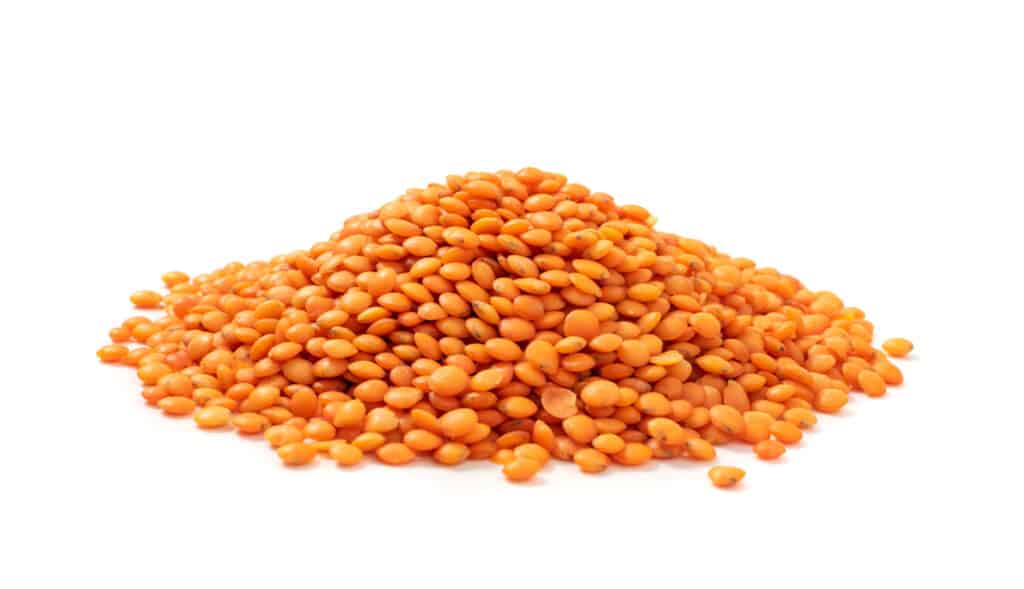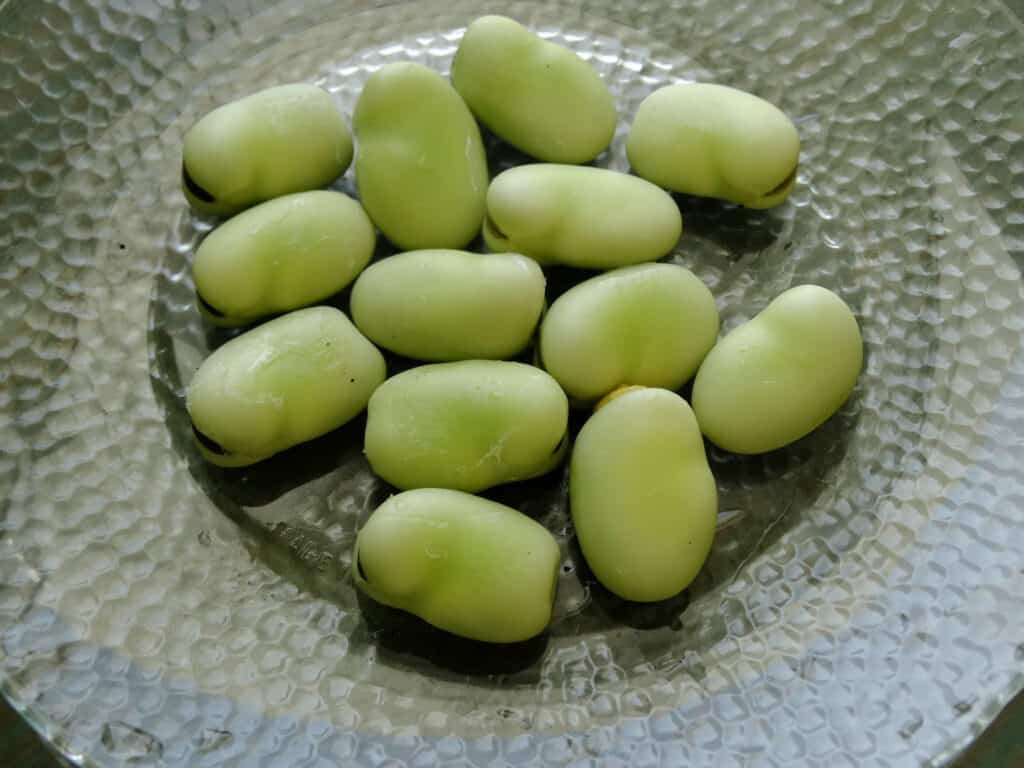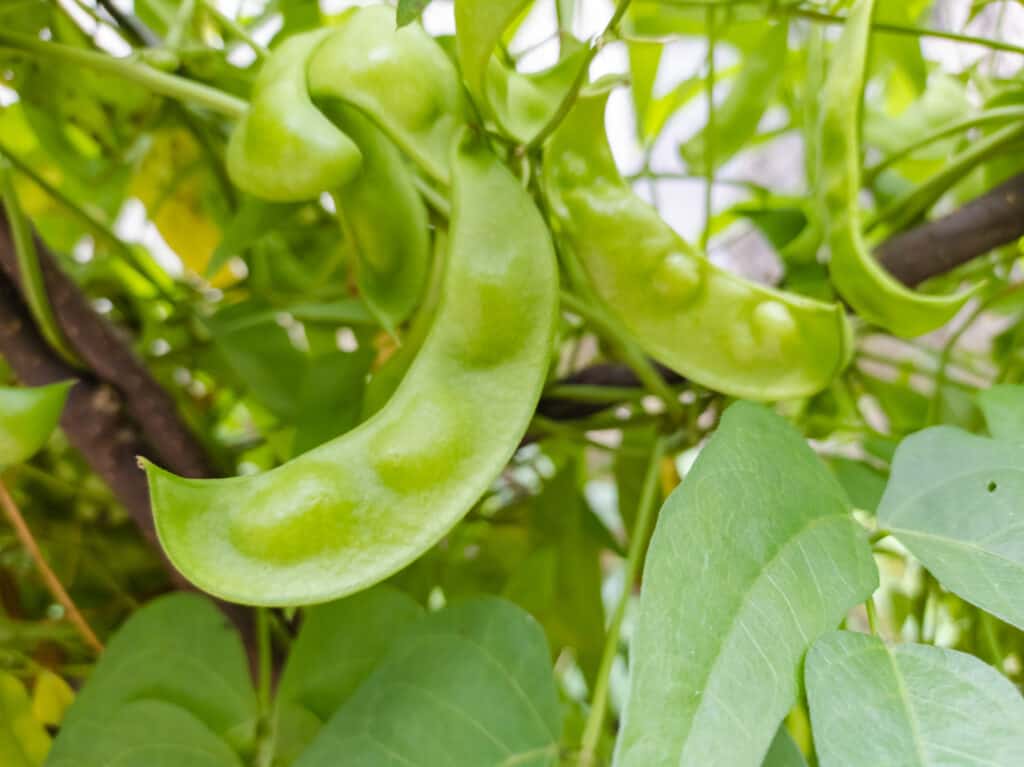The nutrient-rich legume family includes lentils and beans, which are renowned for their high levels of protein and vital nutrients. These vegetables can be used in place of meat or even as just an added protein supplement to almost any meal. In many cultures and cuisines around the world, both lentils and beans are considered staples. It certainly makes sense why anyone would want these nutritional powerhouses growing in their garden!
Many garden enthusiasts may not be aware of the differences between lentils and beans, which are important to know before planting either. We’ll compare beans and lentils and highlight their differences as well as their similarities, so you’ll know which plant to start germinating for your garden. Regardless of your choice, both of these plants would make an excellent addition to a vegetable garden and even do well as indoor plants.
Comparing Lentils vs. Beans
| Lentils | Beans | |
|---|---|---|
| Classification | Lens culinaris | Multiple genera of Fabaceae |
| Alternative Names | Lens esculenta | Legumes, peas |
| Origin | Syria | Worldwide |
| Description | An edible legume that grows annually and boasts podded seeds that are shaped like lenses. | An edible legume that grows in large pods and produces kidney-shaped seeds that can be cooked and used for food. |
| Uses | Primarily used for cooking, especially in curries and soups. | Primarily used for cooking, especially for baking, curry, soup, salsa, and much more. |
| Growth Tips | Always plant in full sun with loose and well-drained soil that has been thoroughly fertilized. | Beans don’t need a ton of fertilizer but do require full sun. |
| Interesting Features | Lentils are packed with nutrition and do not contain cholesterol or sodium. | Most beans contain lectin, a compound that can be toxic. As a result, most beans must be cooked before being used in cuisine. |
The Key Differences Between Lentils and Beans

Lentils are smaller than beans but take less time to prepare.
©Ermak Oksana/Shutterstock.com
Both lentils and beans are considered legumes, which are plants typically grown as crops that grow edible seeds in pod-like structures. However, lentils and beans do have some significant differences.
While lentils are their own species of plant with a number of different varieties, beans include a wide range of genera under the Fabaceae family. However, most beans eaten in today’s world would be considered part of the genus called Phaseolus.
Compared to beans, lentils are significantly smaller and yield fewer seeds per pod. As a result, lentils take less time to prepare than beans, which normally require soaking for at least eight hours before cooking. Lentils typically don’t need to be soaked before cooking.
Lentils are small, flat disks with a form similar to a lens, whereas beans are typically plumper and more oval or kidney-shaped.
In comparison to beans, lentils are less prone to cause flatulence because they contain less phytate and less indigestible sugar. Though the amount of dietary fiber in different legumes varies, beans have a somewhat higher carbohydrate content than lentils.
Lentils vs. Beans: Description

Beans are typically a chunky oval shape.
©isparklinglife/Shutterstock.com
As their Latin name implies, lentils are typically tiny and lens-shaped. They are available in various colors. Beans have an oval or kidney shape and are also available in various colors.
Lentils are small dried lens-shaped seeds from the legume family of pod-producing plants. They are a mainstay of diets all across the world, from Ethiopia to France and India, and they are a great source of plant-based protein. Lentils come in a wide range of colors, including brown, red, green, yellow, black, and French lentils. Another member of the legume family is the bean. Only a small portion of the world’s more than 40,000 bean varieties are mass-produced. Black beans, kidney beans, pinto beans, white beans, soybeans, chickpeas, and peas are common varieties of beans.
Lentils vs. Beans: Uses
Both lentils and beans are incredibly nutritious. They have a very low fat content, vital vitamins, and tons of protein. Compared to lentils, beans have less fiber, less fat, and more carbs. Soybeans, a common type of edible bean, do have fat but are also high in omega-3 fatty acids.
Lentils often cook quickly and easily, so there’s no need to soak them first. They should be placed in a pot with water. When boiling lentils, avoid using too much water and no salt to prevent the development of hard lentils. The amount of time that each type of lentil needs to cook varies. If not pre-soaked, beans take a very long time to cook. To cut down on cooking time, soak beans for around eight hours. A pressure cooker can also reduce the cooking time in half.
It is still common to find lentils in Middle Eastern and Indian cuisines as well as other international dishes. Red lentils behave similarly to yellow split peas, moong dal, or yellow dal, which are frequently used in Indian cooking. Especially in South American, Mexican, Creole, French, Indian, and Chinese cuisines, beans are widely consumed around the world. They can be purchased canned or dried. While dry beans require some preparation before eating, beans in a can are ready to be consumed.
Lentils vs. Beans: Origin

Although lentils originated in Syria, they are now available worldwide.
©Leo Pakhomov/Shutterstock.com
Lentils were first domesticated in the Fertile Crescent of the Near East. From there, they were introduced to Europe, the Middle East, North Africa, and the Indo-Gangetic plain. The Middle East is regarded as the main center of variety for the domestic Lens culinaris. However, lentils are now essentially available everywhere in the world and can be found in most grocery stores.
Beans are a bit harder to pinpoint in terms of true origin. Most beans eaten in today’s world would include varieties that are part of the genus Phaseolus, which originated in North and South America. Beans, in general, grow on every continent in the world and are very readily available virtually everywhere.
Lentils vs. Beans: How to Grow
Lentils are a cool-season legume. They can be sown as early as two weeks before the typical last frost date in the spring. Before being transplanted into the garden, lentils can be started indoors. At 68°F, lentil seeds will begin to bud after ten days. It takes 80 to 110 days to harvest them.
Lentils must be planted in an area with direct or full sunlight. They favor organically rich, loose soil that drains well. They thrive in soil that is between 6.0 and 6.5 on the pH scale. Lentil seeds should be sown one inch deep and spaced one inch apart. Rows should then be spaced 18 to 24 inches apart. Keep the lentil-growing soil uniformly moist. Once the pods have started to dry towards harvest time, stop watering the lentils.
When lentil plants are five inches tall and again when they are in bloom, add compost tea. Additionally, it’s crucial to use a low trellis to support lentil plants. Lentils should be spaced five inches apart if there is no trellis to ensure adequate airflow. Use row coverings to shield early crops from pests and frost. Weeds and lentils do not compete well. Wind-proof the lentil plants. Although lentils can technically be grown in pots, a practical yield requires multiple plants.
Growing beans is similarly easy and straightforward. As long as the soil is properly prepared before planting, beans don’t need fertilizer. In fact, excessive fertilization may result in lush foliage and few pods. Apply fertilizer along the side of the rows before the first bloom if the soil is poor and growth is sluggish. Beans should be watered in the morning sun to help avoid illness. Do not water in the evening. Water the plants at their bases if at all possible.
Beans can deteriorate in cold, moist soil because they are delicate to frost. Wait a few weeks after the last anticipated frost before planting. Select a sunny area with healthy, well-draining soil. Beans need full sun to develop effectively, just like lentils do. Dig some all-purpose fertilizer and enough compost or well-rotted manure into the soil to get ready. Work the dirt down to a minimum of six inches.
Lentils vs. Beans: Special Features

Beans are a great source of fiber and can be used in a wide range of meals.
©Rulli Yulianto/Shutterstock.com
Lentils can add essential vitamins, minerals, and fiber to one’s diet. They are a great meat substitute and a stellar source of protein as well. Just as well, one’s risk of heart disease is reduced when they substitute a high-fiber ingredient like lentils for beef in their diet.
Beans are a great source of fiber and are packed with minerals. Due to their ease of cultivation and lack of fussiness, these plants are frequently seen in backyard gardens. These plants are among those with some of the quickest growth rates. Compared to many other vegetable plants, these plants develop and mature more quickly, a feature that makes them perfect for beginner gardeners or children.
When it comes down to it, there aren’t that many differences between beans and lentils. Both are part of the legume family, their seeds grow in pods, they have a ton of nutritional value, and they come in a wide range of colors. However, beans are shaped differently, have more carbs with less fiber, and are a little more versatile cuisine-wise than lentils. Beans also grow faster than lentils. Still, both of these plants would make the perfect addition to any garden. They do well when planted together, as they have similar sun, water, and soil requirements. Why not go with both for your own garden?
Up Next:
- Butter Beans vs. Lima Beans: What’s The Difference?
- Fava Bean vs. Lima Bean: What’s the Difference?
- Lentil vs Chickpea: What Are Their Differences?
The photo featured at the top of this post is © Ermak Oksana/Shutterstock.com
Sources
- National Library of Medicine, Available here: https://www.ncbi.nlm.nih.gov/pmc/articles/PMC4376907/
- Wikipedia, Available here: https://en.wikipedia.org/wiki/Phaseolus_vulgaris
FAQs (Frequently Asked Questions)
Is there a difference between beans and lentils?
Lentils are tiny and flat, while beans are shaped like kidneys. Both, however, are legumes that grow in seed pods.
Are beans healthier than lentils?
Both lentils and beans are quite healthy and have almost identical benefits. However, lentils have fewer phytates than most beans.
Are lentils and beans considered legumes?
Yes, both lentils and beans are legumes.
Thank you for reading! Have some feedback for us? Contact the AZ Animals editorial team.






